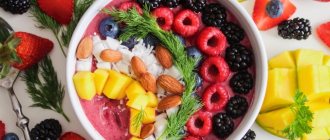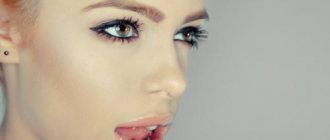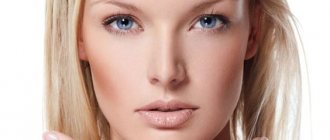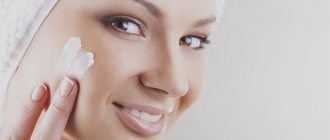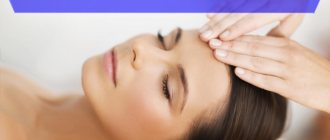DOES PEELING HELP ACNE?
First, let's figure out what the 3 main types of acne (which are scientifically called by the general term “blackheads” or “acne”):
- Comedones (blackheads);
- Pustules (pustules-inflammations);
- Papules (“nodules” protruding above the skin).
Indirectly, acne spots (post-acne) can also be included in these categories.
All these imperfections are very unpleasant, and the prospect of peeling off the top layer of horn cells along with all the problems looks very attractive.
This is precisely the meaning of peeling - a procedure that, due to controlled stress on the skin (for example, an acid-based drug), triggers the regeneration process in tissues. As a result, collagen and elastin fibers are naturally renewed, and, depending on the depth of the intervention, different numbers of layers of skin can be exfoliated.
Causes of acne formation
However, you should remember: treating acne with peelings is not always a panacea. Some inflammations occur due to internal disorders in the body (infections, hormonal imbalance, chronic diseases). Such cases may require prior treatment with medications:
- Irregular care: sebaceous plugs appear;
- Increased activity of the sebaceous glands;
- Heredity;
- Long-term exposure to chlorine;
- Taking steroids or halogen-containing (antiseptic) agents;
- Inflammation in areas of ingrown hairs;
- Allergy;
- Infections in wound sites;
- Hormonal changes;
- Intestinal disorders;
- Subcutaneous mite.
CAUTION: CONTRAINDICATIONS!
With fresh purulent inflammations or recently squeezed out (bleeding) pimples, peeling is strictly prohibited! A burn will appear in this place!
In addition, foci of infection can spread to healthy tissue, so fresh rashes must first be treated!
The remaining contraindications are standard: it is forbidden to do peeling with a fresh tan, against the background of a weakened immune system, or if you are allergic to the components of the exfoliant.
We recommend: 16 popular LIGHT PEELINGS
Only a specialist can prescribe the correct method in each individual case, because self-diagnosis or unprofessionalism are fraught with post-peeling complications.
CAUTION: PARASITES!
If acne is caused by demodicosis (subcutaneous parasites), peeling will only make the situation worse!
Briefly, indications and contraindications for treating acne with peelings can be formulated in the following table:
| IT IS FORBIDDEN | CAN |
|
|
The principle of action here is this: inflammation is caused by bacteria, and their activity can be reduced if you regularly (every month) exfoliate dead horn cells. Deprived of their usual nutrient medium, the bacteria die.
What it is
Peeling (exfoliate) is a procedure for cleaning the skin by removing dirt, excess sebum, unevenness and wrinkles from its surface. With the help of various chemicals or solid materials, the top layer of skin is exfoliated and skin renewal processes are started.
Over the course of a month, skin cells die and clog skin pores, which negatively affects the ability of the dermis to receive oxygen, as well as absorb vitamins and minerals from cosmetic products.
As a result of negative effects on the skin of the environment and chronic diseases, the following appear:
- spider veins,
- dark spots,
- wrinkles and scars that can be eliminated with peeling.
The procedures can be performed in a beauty salon or at home using special scrubs purchased in specialized stores or prepared independently.
WHAT TYPES OF PEELINGS HELP FROM ACNE
Depending on the specific problem, doctors prescribe both superficial and medium and sometimes even deep phenol peels. But the most common acne peels are superficial. They gently cleanse, normalize cellular respiration and the functioning of the sebaceous glands, without causing major injuries. This is why light exfoliation is most effective for solving acne problems.
Medium peels are usually used to combat post-acne and scars. Well, deep exfoliation is prescribed extremely rarely, for very serious indications.
Which peeling is better for blackheads and acne:
- Hardware methods (ultrasound, laser),
- Chemical (almond, retinoic),
- Mechanical (microcrystalline cleaning and brossage).
Why do you need exfoliating cleansing?
Peeling exfoliates dead skin particles on the face and body, helping to improve the appearance. It activates metabolic processes, promotes tissue regeneration and cell renewal. And this is an important and necessary matter, because the accumulation of dead cells leads to a thickening of the stratum corneum of the epidermis - hyperkeratosis. And he, in turn, is to blame for the emergence of such problems as:
- clogged pores;
- the appearance of acne;
- dull complexion;
- slowing down the renewal of the epidermis.
HARDWARE METHODS
Ideal for non-contact yet deep processing. This is especially true with acne because it is an infection that can spread across the face. (This is why, by the way, you should not use homemade scrubs if you want to get rid of pustules.)
In addition, such techniques can effectively eliminate traces of rashes, and thanks to modern technologies, it is possible to plan treatment tailored to the patient’s specific skin type.
Ultrasonic
Processing in this case occurs using ultrasound waves. Old cells inside the tissues are destroyed, the pores are cleansed of sweat, dirt and makeup, blood circulation increases, and the skin becomes healthier. This type of cleaning is the least traumatic.
Laser
The laser beam, using heat, eliminates imperfections point by point, so after the procedure you can lead your usual lifestyle. The depth of treatment of the skin within this method can be adjusted by a doctor and includes, for example, laser resurfacing or erbium laser treatment.
We recommend: PEELING OR FACIAL CLEANING: WHAT IS BETTER? | 5 differences
It is especially recommended for getting rid of teenage acne due to its non-contact nature (inflammation does not spread across the face). The main lasers for treating acne are diode and green (Nd:YAG).
Mechanical impact
Cleanings such as dermabrasion or brossage allow you to eliminate imperfections mechanically (using grinding with brushes and abrasive particles). The skin gets rid of unevenness, age spots, fine wrinkles and scars, but the disadvantages include pain and the presence of a recovery period.
Disadvantage: the procedure cannot be used with fresh inflammations (more suitable for prevention). Another contraindication to mechanical exfoliation is dry or sensitive facial skin.
Milk composition for dry skin
If the problem is dry epidermis that is prone to allergies, then you can prepare a mild remedy based on milk and oatmeal. If you carry out this procedure regularly, then very soon the number of wrinkles will decrease, the tone and elasticity of the epidermis will increase, and it will be saturated with useful substances.
In the video - milk peeling for the face:
In order to use this remedy, you need to take milk (the fattier the better) and rolled oats. Prepare a mixing container and add 5 tbsp. warm milk and 4 tbsp. oatmeal. Mix everything thoroughly and apply to the face. After waiting a couple of minutes, you can begin to gently massage your face, which will lightly exfoliate and nourish the cells. Milk will actively moisturize, stimulating the production of collagen, and oatmeal promotes the exfoliation of old cells, releasing their beneficial substances to the skin.
After 15 minutes, the mask can be washed off and a nourishing cream can be applied. You will immediately feel renewed skin. It will be soft and silky. This procedure can be repeated every week to achieve better results. Also read how often you can exfoliate your face.
CHEMICAL METHODS AVAILABLE AT HOME
The most popular chemical peel for acne is enzymatic, or enzymatic: it is delicate, acts quickly and causes minimal harm. This is explained by the gentle composition: the enzymes contain natural acids of low concentration (obtained from apples, grapes, pumpkin, etc.).
More intense acid types of exfoliation are no less effective in combating rashes: they trigger natural recovery mechanisms in the skin and are also quite often prescribed by cosmetologists.
Salons also offer a special “acne peeling”: it contains keratolytic components (“exfoliators”), as well as antiseborrheic substances (against skin “dandruff”). As a result of a course of such procedures, the skin smoothes and becomes velvety to the touch, and the complexion improves.
Glycolic
A cosmetic treatment based on an acid derived from beets or sugar cane helps rejuvenate and brighten the skin and clear sebum from pores. After several sessions, the face looks well-groomed and refreshed.
Attention: due to the acceleration of metabolism in tissues after peeling, pimples may become temporarily active (but this will pass soon)!
Retinoic
Yellow exfoliation is carried out on the basis of drugs that are essentially similar to vitamin A. The result is an antiseptic effect; tissues are simultaneously moisturized, healed and rejuvenated.
This procedure often requires a preparatory period of up to 2 weeks.
Ferulic
Ferulic acid works well against acne on all skin types and also has excellent antioxidant effects. With this technique you don’t have to worry about swelling or skin irritation.
Trichloroacetic
This anti-acne peeling is a fairly radical measure and is used locally, mainly to treat acne scars and only if there are no active inflammatory processes. This technique has many contraindications and should be used with caution (mainly in salons, at home - up to a maximum of 10% acid concentration and only in consultation with a cosmetologist!).
We recommend: 6 recipes for AMBER PEELING. Unusual cleaning in the salon and at home
Salicylic
The salicylic exfoliation method is based on beta-hydroxy acid, also found in aspirin. It dissolves sebum well, penetrates deeply into the glands, and dissolves blackheads. In modern cosmetics, it is most often used in combination with other softening components or as a preparation for mechanical cleaning.
Almond
Mandelic aha acid (alpha hydroxy acid) acts like the antibiotic erythromycin: it has a powerful antibacterial effect. Indicated for oily skin with comedones in the form of a gel, and in the presence of a large number of inflammations, it is recommended in the form of a lotion.
Amber
This peeling for acne involves the use of a composition based on succinic acid in combination with other active ingredients (lactic, glycolic, tartaric and other acids). It is more often used in older age and helps not only stimulate the epidermis to produce natural collagen and elastin fibers, but also whiten the skin.
So, to summarize:
Contraindications
Superficial peeling is not recommended if the skin has open wounds, inflammation or a herpetic rash.
Medium peeling should be avoided in the following cases:
- if less than six months have passed since dermabrasion;
- if less than one week has passed since hair removal;
- when using aromatic retinoids for the treatment of psoriasis;
- when the skin is affected by herpes;
- for dermatological diseases such as psoriasis, eczema, rosacea, even if the disease is in remission;
- if there are a large number of moles or warts on the skin;
- if there is increased skin sensitivity;
- if you have cardiovascular diseases;
- during pregnancy and breastfeeding;
- during exacerbation of chronic or infectious diseases;
If, after using peeling products, redness, prolonged peeling, hemorrhages or a rash appear on the skin, you should consult a dermatologist.
TABLE OF TREATMENT METHODS BY TYPE OF ACNE
| PROBLEM | TREATMENT METHOD |
|
|
|
|
|
|

